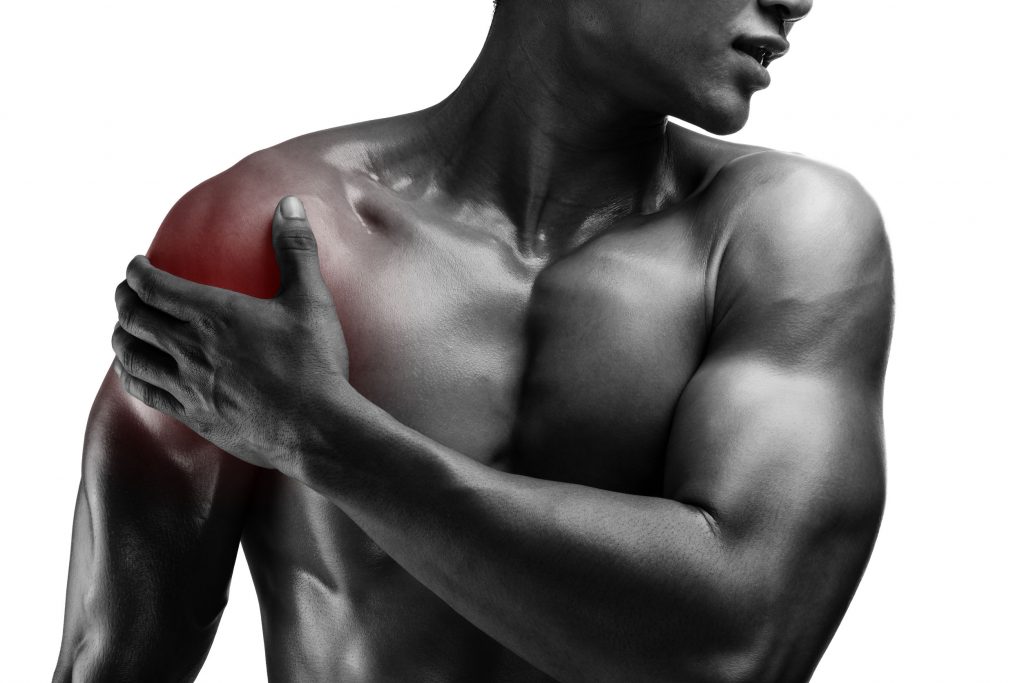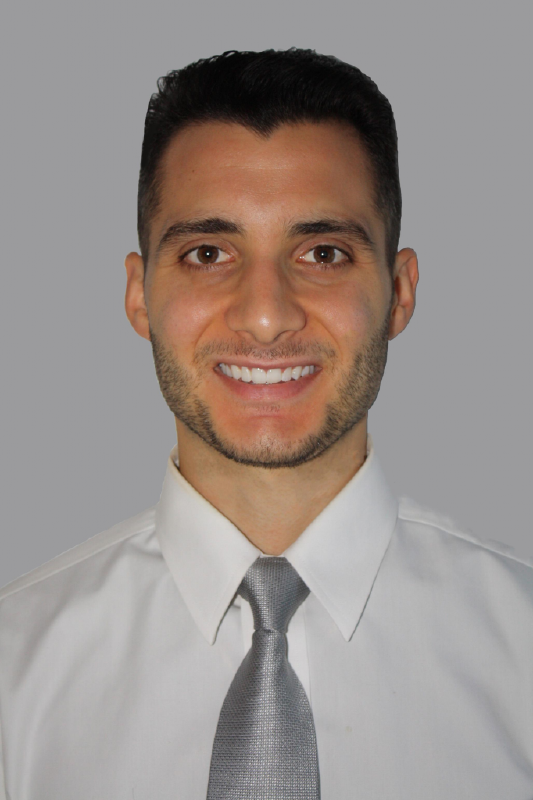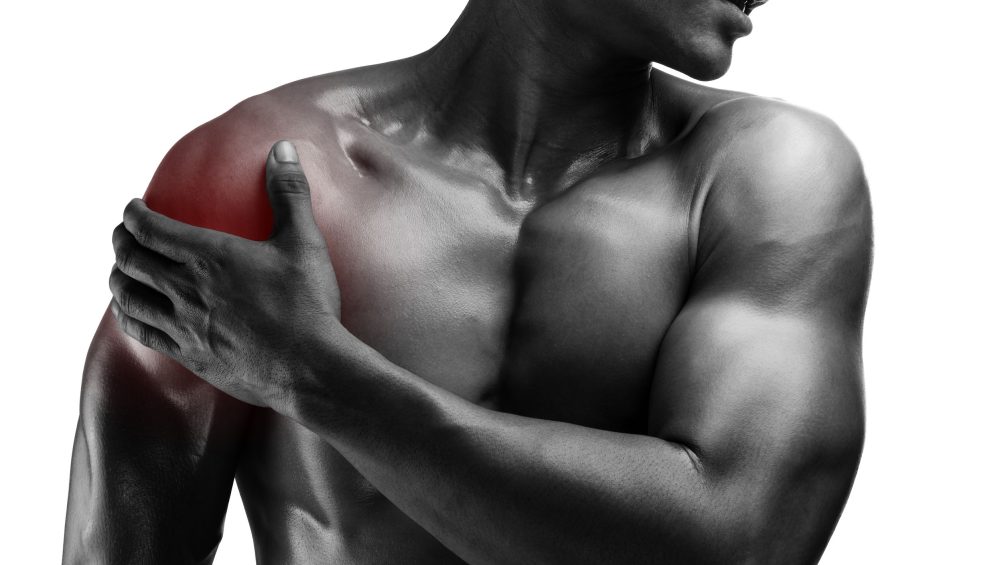If you missed Part I of Dr. Licameli’s guest post, you can check it out HERE. Now, you could read today’s post and get the gist of what was said yesterday, but you run the risk of missing out on some nitty-gritty details.
Kinda like watching Blade Runner 2049.
You could watch it without watching the original, but you’re missing out on some important context.

*** This is the part where’d you know what points 1-4 were all about.
5) Don’t Push Through Pain…Not All The Time, Anyway
There is good pizza and there is bad pizza. There is good pain and there is bad pain. Differentiating the difference is of utmost importance when training the shoulders.
We’re not talking about delayed onset muscle soreness (DOMS), which is felt 1-2 days after training.
We’re talking about pain during training.
What follows are some guidelines to help you navigate your way through pain.
KEEP IN MIND, THESE ARE GENERAL GUIDELINES. IF YOU HAVE PAIN, BE SURE TO SEE A QUALIFIED HEALTHCARE PRACTITIONER!
I stress finding a qualified healthcare practitioner. A qualified healthcare practitioner will explain all of this, in addition to providing several options to keep you training while recovering from injury.
Let’s face it…not all physical therapists have spent much time under a bar. Some have spent time at the bar or even at barre class, but many have no experience or expertise in weight lifting or bodybuilding. You deserve your goals to be taken seriously. You deserve more than things like, “stop squatting for 4 weeks” and standing internal and external rotation with a band to “strengthen” the rotator cuff…or is it rotator cup…no, it’s rotary cuff…rotary club!
That’s it.
Characteristics of good pain:
-How Does It Feel?: Muscle burn; usually symmetrical right to left.
-Onset: Gradually increases as the set progresses.
-When Does It Stop?: At the completion of a set.
Characteristics of bad pain:
-How Does It Feel?: Sharp, numb, tingling; intensity may be asymmetrical right to left.
-Onset: Quickly; may be felt after only the first few reps
-When Does It Stop?: Days, weeks, months…; stays well after the set is completed, however may also end at the completion of a set.
If you find yourself experiencing bad pain, it may not be the end of the world. Bruce Lee also said, “Be like water.”
Water has the flexibility to take the shape of whatever container it is placed in, while still maintaining its identity…water.
In a similar way, our training can be modified without losing its identity or effectiveness. Try to modify your training. Sharp pain when pressing overhead with a barbell? Try a landmine press. Unable to perform a reverse flye? Try a face pull. Keeping the same exercises and modifying training volume may also do the trick.
6) Don’t Overdo It With The Classic “Rehabilitation” And “Injury Prevention” Exercises. There Are Hidden Benefits In Some Classic Movements.
It is no one’s fault but our own that, as a profession, physical therapy has a certain reputation when it comes to injury and injury prevention. The misconception is that in order to reduce pain or prevent injury, a hefty dose of classic “rehabilitation” exercises need to be added into an already packed training regimen.
For me, and many out there like me, gone are the days of separating “therapeutic exercise” from “regular training.” Say goodbye to blocking off a half hour pre and post workout to foam roll and perform straight leg raises and clamshells. If you look closely, you can find what you need for healthy shoulders right there in your existing training routine. Here are some examples:
Face Pull: Trains scapular retraction and external rotation. Great for scapular stability, rotator cuff strengthening, and balancing out internal vs. external rotation.
Farmer Carry/Overhead Carry: Excellent way to train postural, scapular, and global rotator cuff stability, not to mention full body/core strength.
Plank on Ball with Protraction and/or the Ab Wheel: Great way to dynamically train serratus anterior, core stability, and scapular stability.
Plank with Band Around Wrists with Protraction: Great way to train external rotation as well as dynamically train serratus anterior, core stability, and scapular stability
Landmine Press: With proper scapular movement (more on this to come), this is an excellent exercise to dynamically strengthen serratus anterior and improve scapular neuromuscular control.
Pull-up/Pull-down: With proper scapular depression at the initiation of the pull, this is a fantastic exercise to target the lower traps, which play a key role in scapulohumeral mechanics. Full range of motion and a long eccentric will also help lengthen the lats, which can limit shoulder mobility.
Squats/Deadlifts: Train “shoulder packing” position. A proper warm-up prior to these lifts will also include thoracic mobility work.
Seek out experts like Tony Gentilcore (obviously), Andrew Millett, John Rusin, Jeff Cavaliere, Quinn Henoc, Mike Reinold, Mike Robertson, Eric Cressey, Dean Somerset, Zach Long, Joel Seedman, Ryan DeBell, Teddy Willsey, and many more.
But if you have pain, GO SEE A QUALIFIED HEALTHCARE PRACTITIONER FIRST!
7) Symmetry…Don’t Forget External Rotation and Thoracic Mobility
As previously mentioned, weightlifters tend to be very “internal rotation dominant,” and for good reason.
Let’s look at the muscles that internally rotate the shoulder.
Just to name a few: pec major, lats, subscapularis, teres major, front deltoid.
Let’s take a look at the muscles that externally rotate the shoulder: infraspinatus, rear deltoid, teres minor.
The muscles that internally rotate the shoulder are of greater number and greater size (the pecs and lats are two of the strongest muscles of the upper body). The external rotators are less in number and much smaller. Give those external rotators a fighting chance to create some balance! Don’t neglect them!
It’s important to note that just performing an equal amount of presses and rows/pull-downs will not improve shoulder rotation symmetry because, as previously mentioned, both the pecs and the lats internally rotate the shoulder. So even though pull-downs and rows are “back” exercises, they still train the lats and therefore still train internal rotation.
Some of my favorite exercises to train external rotation are face pulls, W raises/pulls, reverse flyes with external rotation bias, wall slides with a band, and planks with a band around the wrists.
Adequate thoracic mobility is crucial to optimal shoulder function. If the scapulae are the foundation of the shoulder, the thoracic spine is the ground on which the foundation is built.
Thoracic mobility should be included in almost every warm-up, regardless of the body part being trained. One of my favorite thoracic mobility exercises is a kneeling protraction sit-back into a lat stretch with deep breathing. Be sure to check out this video of a sample lower body warm-up routine that includes this exercise.
8) Don’t Pin Down The Scapulae
It happens all the time.
An idea comes out and soon gets morphed into an extreme.
“Dynamic stretching may be better than static stretching pre-workout” turns into, “Don’t ever do static stretching because it’s a waste of time.”
“Foam rolling may help improve short-term soft tissue restriction and range of motion” turns into “I have to foam roll for 30 min when I wake up as well as pre workout, post workout, and before bed in order to break up adhesions and prevent injury.”
The idea of “shoulders down and back” seems to have experienced a similar course. Yes, keeping the shoulders in a retracted and depressed position with a properly extended thoracic spine will place the muscles, nerves, and joints in a structurally advantageous position as well as open up the subacromial space by about 30%. It also allows for unrestricted overhead shoulder range of motion.
However, the scapulae must move, and they must move correctly. The scapula is the base and foundation of the shoulder and dysfunction can most certainly lead to injury.
Note From TG: Check out THIS article I wrote a while back touching on the same topic; in this case how it relates to performing a DB Row correctly.
Generally, the scapula remains relatively stationary during the first 30 degrees of shoulder abduction (lifting the arm out to the side as in a lateral raise), with the movement coming primarily from the glenohumeral joint. As abduction continues past 30 degrees, the scapula begins to move and the glenohumeral joint and scapulothoracic joints move in about a 2:1 ratio.
This means that at 120 degrees of abduction, the glenohumeral joint has contributed about 80 degrees and the scapula has contributed about 40 degrees. If the scapula remains pinned “down and back,” range of motion will be restricted and the glenohumeral joint will be forced to overcompensate. This dysfunction will likely limit performance and increase risk of injury.
In addition to upward rotation, the scapula also needs to protract (glide forward) during both overhead and pulling movements. Serratus anterior is one of the main muscles responsible for protraction as well as for adhering the concave surface of the scapula to the convex surface of the ribcage. Pinning the scapulae down and back is not what we need…we need controlled, scapular motion.
I’m Done
If at least one person benefits from these tips, I have done my job. My hope is that you will keep these tips in mind and reap the benefits of strong, healthy shoulders. You’re putting the work in, now let’s capitalize on it.
About the Author
 Nicholas M. Licameli
Nicholas M. Licameli
Doctor of Physical Therapy / Pro Natural Bodybuilder
Youtube: HERE
Instagram: HERE
Facebook: HERE
Every single thing he does, Nick believes in giving himself to others in an attempt to make the world a happier, healthier, and more loving place. He wants to give people the power to change their lives. Bodybuilding and physical therapy serve as ways to carry out that cause. Nick graduated summa cum laude from Ramapo College of New Jersey with his bachelor’s degree in biology, furthered his education by completing his doctoral degree in physical therapy from Rutgers School of Biomedical and Health Sciences (previously the University of Medicine and Dentistry of New Jersey) at the age of 24, and has earned professional status in natural bodybuilding. His knowledge of sport and exercise biomechanics, movement quality, and the practical application of research combined with personal experience in bodybuilding and nutrition allows him to help people in truly unique ways. Love. Passion. Respect. Humility. Never an expert. Always a student. Love your journey.



